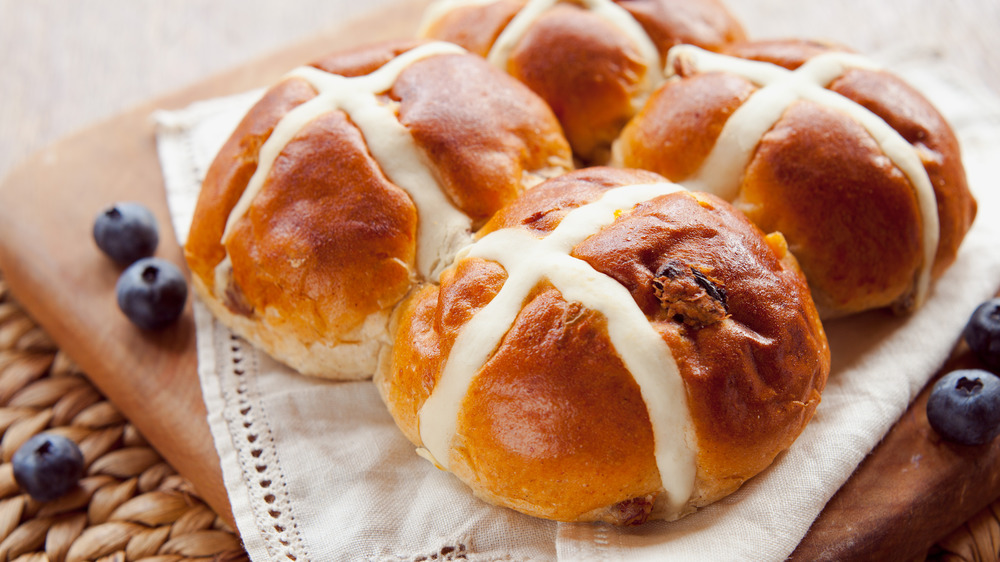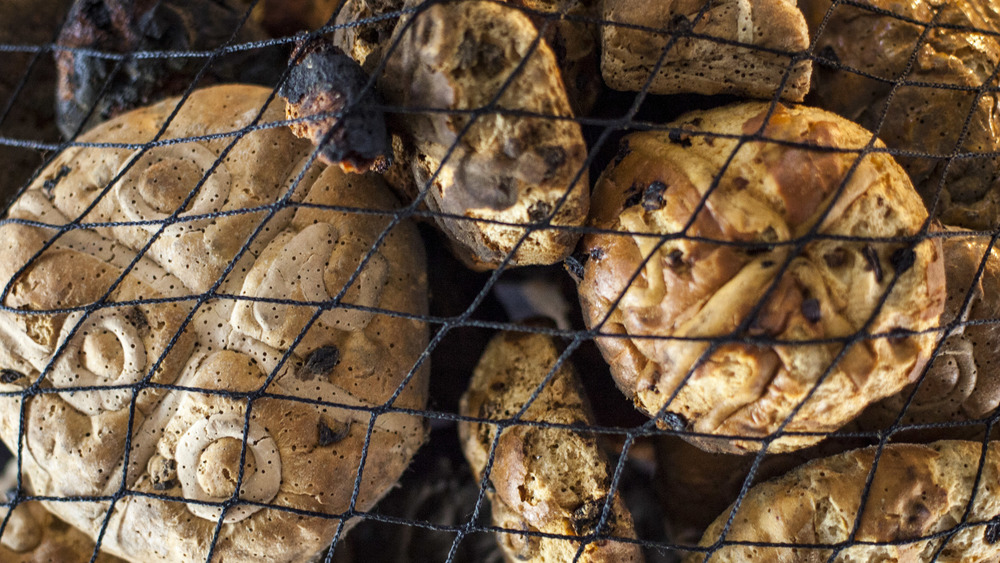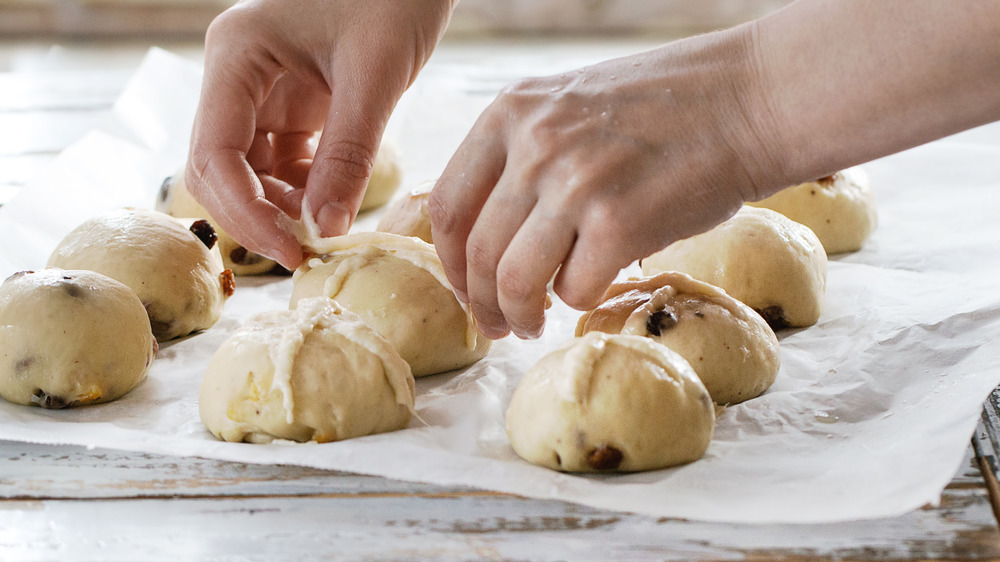What Are Hot Cross Buns And How Do You Make Them?
Festivals and holidays are a good excuse to bring back — and indulge in — seasonal treats that could arguably make us feel weird about eating it when they're not meant to be enjoyed (hands up, those of us who might have tucked into a German stollen or a Christmas fruitcake in the middle of July). And while many might consider Easter as the perfect time to feast on chocolate bunnies, eggs, and Peeps, traditionalists who might want something festive and less sugary might look to hot cross buns to fill the gap.
Hot cross buns likely originated in 18th century London, where the first recipe was found, and they are mostly enjoyed as Good Friday special thanks in part to the Church of England, which saw it as a Christian symbol because, as spokesman Steve Jenkins put it to the BBC, the pastry appeared to tick all the boxes. "You have got the bread, as per the communion, you have got the spices that represent the spices Jesus was wrapped in the tomb, and you have got the cross," he said.
There are plenty of stories surrounding hot cross buns
But hot cross buns weren't made popular by Christian scripture, their popularity mainly spread as a result of an old nursery rhyme that came from a 1733 ditty, which read: "Good Friday comes this Month, the old woman runs, With one or two a Penny hot cross Bunns." Back then, the buns weren't fancy enough to have icing, crosses were carved onto the tops of the bun (via BBC).
As with many traditional foods with history, there is interesting folklore surrounding the beliefs and superstitions around hot cross buns. Practically Edible says there was a time people thought that if a bun made on Good Friday could make it through the year without getting moldy, they would also survive to the end of days. Any hot cross buns that made it past Easter could be saved and used to help sick get better.
There is also the belief that taking hot cross buns on a sea journey would protect the boat from any mishaps. In fact, one English pub, which dates back to 1848, is built on the site of a home whose owner added one hot cross bun a year to her collection in the hopes that her son, who was lost at sea, would return (via Practically Edible). The buns still hang in the pub and are mold-free.
There are several ways to make hot cross buns
As with other pastries that have a past, there are many different ways to make hot cross buns. The Food Network variation calls for a lemon-flavored icing and currants instead of raisins, with the citrus glaze added on after the buns come out of the oven, and while they are still warm. Sally's Baking Addiction blog shares a family recipe which makes use of raisins, cinnamon, and brown sugar into a buttery dough and topped with a sweet orange icing before the breads go into the oven. The site even offers a variation where you can add a flour cross and then brush the orange glaze on afterwards.
If you want to try and give the buns added longevity, King Arthur Baking suggests using the "tangzhong technique" which involves cooking a set quantity of flour and milk until it becomes a slurry, cooling it down and then adding it to the rest of the dry ingredients. While the site promises that the resulting hot cross buns will keep soft and fresh for a few days, they make no guarantees that the buns will hold their integrity for a year, nevermind to the end of time.


